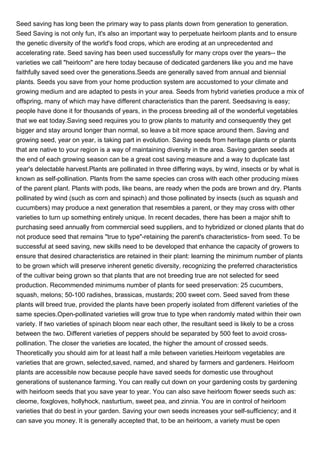Seed saving has long been used to preserve heirloom plant varieties and ensure genetic diversity of food crops as seeds are passed down through generations. It is important for maintaining biodiversity in gardens and regions. With seed saving, plants become adapted to local climates and saving seeds year after year participates in plant evolution. However, to successfully save seeds that breed true to the parent plant, certain practices must be followed around plant spacing, isolation of different varieties to prevent cross-pollination, and minimum plant populations. Seed saving is a way to reduce gardening costs, increase self-sufficiency, and safeguard against global disasters.

